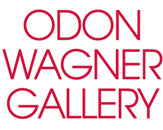Georges Braque
French
Georges Braque was born in Argenteuil-sur-Seine, France, on May 13, 1882. He is most well known for being the founder of Cubism alongside Pablo Picasso.
Braque grew up in Le Havre and studied evenings at the École des Beaux-Arts from about 1897-1899. He left for Paris to study under a master decorator to receive his craftsman certificate in 1901. By 1906 Braque’s work became Fauve in style. He spent time in Antwerp with Othon Friesz, and following that experience, later showed his Fauve artworks at the Salon des Indépendants in Paris.
Braque was moved by Pablo Picasso’s breakthrough painting, Les Desmoiselles d’Avignon, and visited his studio in 1907. From there, he and Picasso worked together to develop a new style of art that would later be known as Cubism. Braque was always concerned with pictorial space and composition. He sought balance and harmony in the works he created. Although Picasso’s style evolved and moved away from the strict guidelines of Cubism, Braque adhered to the cubist rules about depicting objects from multi-faceted perspectives in geometrically patterned ways.
Braque was most interested in showing how objects look when viewed over time in different temporal spaces and pictorial planes. As a result of his dedication to depicting space in various ways, he naturally gravitated towards designing sets and costumes for theatre and ballet performances, doing this throughout the 1920s. In the mid-1920s, Braque designed the décor for two Sergei Diaghilev ballets, including, Les Fâcheux. In 1937 he was awarded the First Prize at the Pittsburgh International, and in 1948, he won the main painting prize at the Venice Biennale.
His work was certainly influenced by the period in which he was alive. His art reflects the societal issues and sentiments of the time. For example, during the World Wars, his work took on a darker, and more somber tone. Following the wars he focused on painting lighter subjects.
In the last few years of his life, due to ill health, he was prevented from creating large-scale pieces but continued to paint, make lithographs, and design jewelry. Braque died on August 31, 1963 in Paris




